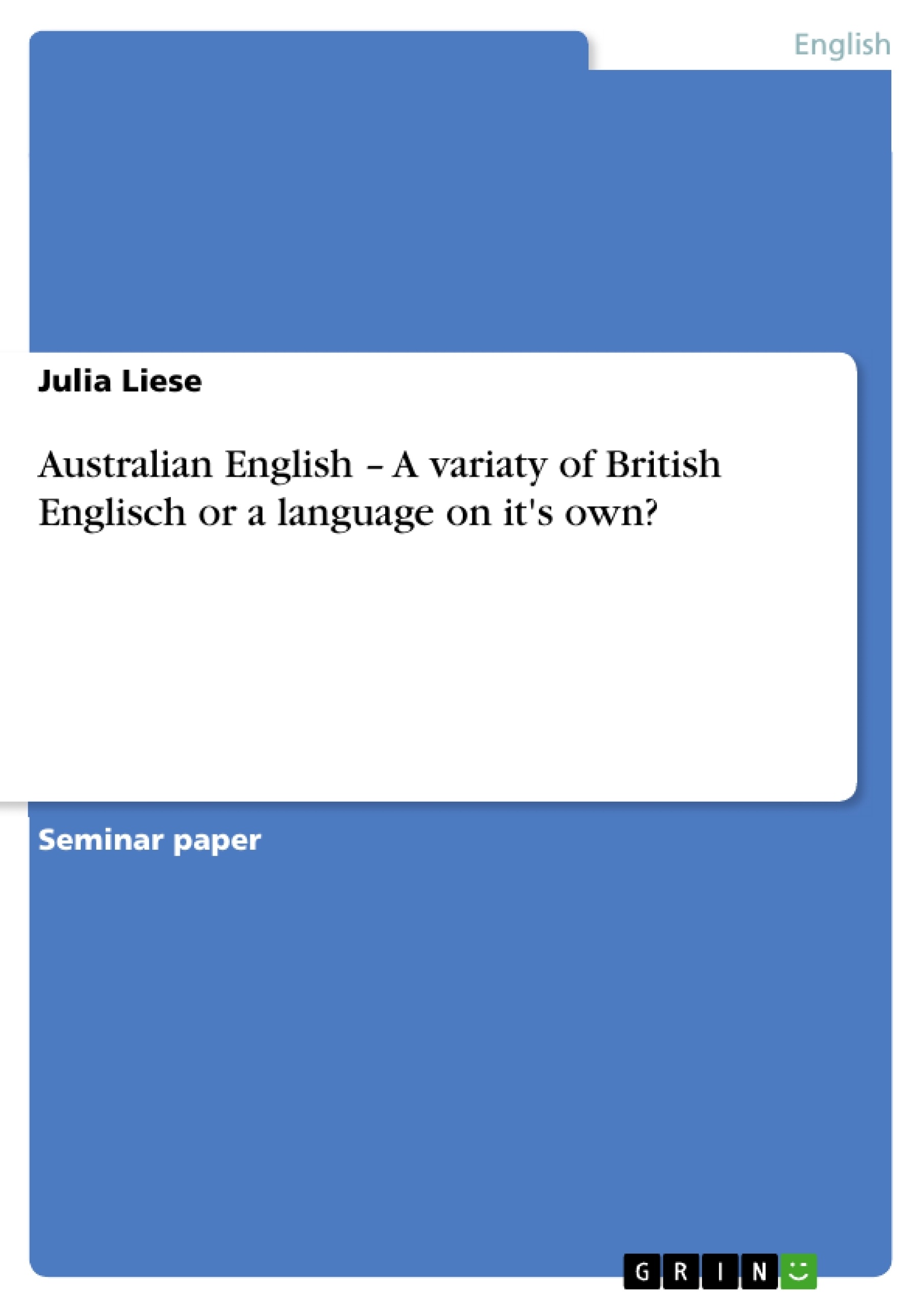When Lieutenant James Cook and naturalist Sir Joseph Banks were exploring the east coast of Australia in May 1770, they suddenly saw strange animals “which must feed upon Grass [sic!], and which, we judge, could not be less than a Deer [sic!], […] having very small Legs [sic!], and the print of the Feet [sic!] like that of a Goat [sic!] “ (Cook chapter 8). Wondering what this could be, they asked a native what the creature was called. The Aborigine, a member of the tribe Guugu Yimidhirr, replied: “Kangaroo!”, which meant “I don’t understand you!“ (Lloyd). Cook erroneously thought that this was the name of the animal and wrote on 4th August 1770 in his journal: „[…] the Animals [sic!] which I have before mentioned, [are] called by the Natives [sic!] Kangooroo [sic!], or Kanguru [sic!]“ (Cook chapter 8).
This being the first record, the word “kangaroo” was soon adopted into Standard British English and is said to be the first Australian English word. But what exactly is Australian English? Queen Elizabeth II of Great Britain is at the same time formally Queen of Australia, and Australian English is often referred to as being close to British English. Therefore, Australian English should be considered to be variety of British English, as linguists such as Laurie Bauer and Dr. Gerhard Leitner from the Free University in Berlin suggest . However, there are several linguists like Felicity and Palethorpe Cox , Roswitha Dabke , and Laura Tollfree , who examined the multitude of differences between Australian and British English which lead to the conclusion that Australian English should be regarded as a language of its own – the opinion that I share.
To prove that Australian English is not just a variety of British English, I am going to compare the two languages on four major linguistic levels, namely morphology, phonology, lexicon and spelling, and highlight the differences. There are, of course, also differences in other linguistic fields such as syntax. However, I am only going to present the four mentioned above, as they contain the most significant distinctions and serve my argumantation’s purpose best. To widen the spectrum of my investigations and not limiting them to linguistic factors, I will also look at a historic event and its impact on the language.
Inhaltsverzeichnis (Table of Contents)
- Australian English – A Language or a Variety?
- Morphology
- Place-names with “the”
- Reduplicative compounds with /-1/
- Suffix /-i/
- Phonology
- Monophthongs
- Diphthongs
- Lexicon
- Words from different historical periods
- Borrowed words from Aboriginal languages
- American English influence
- Spelling
Zielsetzung und Themenschwerpunkte (Objectives and Key Themes)
The objective of this paper is to prove that Australian English is a distinct language and not simply a variety of British English. To achieve this goal, the author compares the two languages across four major linguistic levels: morphology, phonology, lexicon, and spelling. The paper highlights the significant differences observed in each area, illustrating the growing divergence of Australian English from its British counterpart.
- Morphological differences between Australian and British English.
- Phonological variations in pronunciation, particularly concerning monophthongs and diphthongs.
- Lexical differences, including unique Australian English words and the influence of American English.
- Spelling differences, primarily influenced by American English.
- The impact of historical events on the development of Australian English.
Zusammenfassung der Kapitel (Chapter Summaries)
- Australian English – A Language or a Variety?: This introductory chapter provides background information on the history of Australian English and introduces the key argument that Australian English is a distinct language. The author uses the example of the word “kangaroo” to highlight the differences between Australian and British English.
- Morphology: The author presents three key morphological differences between Australian and British English: the use of “the” in place-names, reduplicative compounds with the suffix /-1/, and the suffix /-i/ in noun formation. Each phenomenon is explained with examples, illustrating the distinctive features of Australian morphology.
- Phonology: This section focuses on the differences in pronunciation between Australian and British English. The author utilizes IPA vowel charts to depict the variations in monophthongs and diphthongs, highlighting the unique articulation of Australian English.
- Lexicon: The author explores the distinct lexicon of Australian English, categorizing words into three groups: words from different historical periods, borrowed words from Aboriginal languages, and words influenced by American English. Each category is exemplified with specific words and their unique meaning in Australian English.
- Spelling: This chapter examines the influence of American spelling on Australian English. The author highlights the shift from [-ise] to [-ize] and from [-our] to [-or], indicating the increasing influence of American English on spelling conventions in Australian English.
Schlüsselwörter (Keywords)
This paper focuses on the language of Australia, exploring the key differences between Australian and British English. Key themes include the distinctiveness of Australian English, its morphological and phonological features, lexical borrowings from Aboriginal languages and American English, and the impact of historical events on language development. The work examines the ongoing evolution of Australian English, highlighting its unique features and its divergence from British English.
- Quote paper
- Julia Liese (Author), 2010, Australian English – A variaty of British Englisch or a language on it's own?, Munich, GRIN Verlag, https://www.grin.com/document/174544




